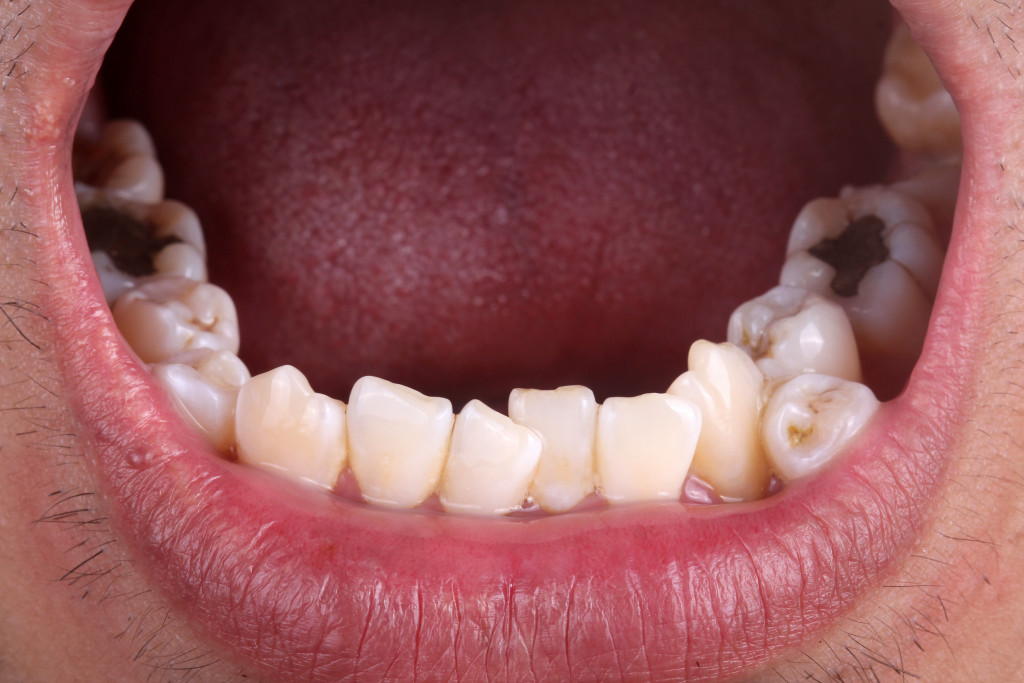Anyone can get periodontal disease, also called gum disease, but there are things you can do to help prevent it. Periodontal disease is an infection of the gums and bones that support your teeth. It can cause your gums to become swollen and bleed easily. If you have periodontal disease, you may eventually lose your teeth.
While anyone can get gum disease, some things make you more likely to get it. These include smoking, diabetes, taking certain medications (like steroids or cancer treatment drugs), and having a family history of gum disease.
There are a few things you can do to help prevent gum disease:
Quit Smoking
Smoking is one of the most significant risk factors for gum disease. If you smoke, quitting is one of the best things you can do for your overall and oral health. If you have trouble quitting smoking, here are some options:
Therapy
Smoking can be addictive, and this is because of the nicotine in cigarettes. Behavioral therapy can help you understand your smoking habits and give you the tools to quit. A counselor usually provides this type of therapy, which can be done one-on-one, in group sessions, or even over the phone.
Nicotine Replacement
Nicotine replacement therapy provides you with nicotine in a different form. For example, spicy gum can help fulfill your cravings for cigarettes. There are also patches, lozenges, and inhalers that can help.
Medications
Some medications can be used to help you quit smoking. These include:
- Bupropion (Zyban)
- Varenicline (Chantix)
Both of these medications help to reduce cravings and withdrawal symptoms.
Support Groups
Lastly, there are support groups that can help you quit smoking. These provide a sense of community and allow you to share your experiences with others going through the same thing.
Quitting smoking is no easy feat, but it’s worth it for your health.

Practice Good Oral Hygiene
This means brushing twice a day for two minutes each time, flossing daily, and using mouthwash daily. Be sure to brush all surfaces of your teeth, including along the gumline. Here are additional tips for better oral hygiene:
Oil Pulling
Oil pulling is an ancient practice involving swishing oil around your mouth for 20 minutes. This helps to remove bacteria and toxins from your teeth and gums.
Coconut oil, sesame oil, and sunflower oil are all excellent options for oil pulling.
Brush with Baking Soda
Baking soda is a gentle abrasive that can help to remove plaque from your teeth. It’s also alkaline, which helps to neutralize acids in your mouth and fight tooth decay.
To use, wet your toothbrush and dip it in baking soda. Then, brush your teeth as normal. Rinse well afterward.
Make a Mouthwash
You can make a mouthwash at home using water and baking soda. This will help to neutralize acids, fight tooth decay, and remove plaque. Mix 1 teaspoon of baking soda with 1 cup of water. Swish the mixture around your mouth for 30 seconds before spitting it out. Rinse with water afterward.
Healthy oral hygiene is one of the best ways to prevent gum disease.
Eat a Healthy Diet
What you eat matters for your oral health. A diet rich in whole foods is best. Fresh fruits and vegetables, lean protein, whole grains, and dairy are all excellent choices. Avoid sugary drinks and snacks as much as possible. These can contribute to tooth decay. Consider adding these foods to your diet:
- leafy greens
- broccoli
- kiwi
- cheese
- yogurt
- plain water
See Your Dentist Regularly
Dentists often look for any early signs of gum disease so it can be treated before it gets worse. If they do discover signs of periodontal disease, they will do prevention treatments for it. Here are some of the most common.
Implants
Exposed gums are more vulnerable to infection and inflammation. Tooth implants can help to protect your gums and teeth. They are titanium posts that are inserted into your jawbone. Once they have healed, dental implants can support dental crowns, bridges, or dentures.
Crown Lengthening
If your gums cover too much of your tooth, it can make cleaning difficult and more susceptible to decay. Crown lengthening helps to expose more of the tooth so you can properly clean it. This involves surgically removing some gum tissue.
Pocket Reduction Surgery
This dental procedure is also called flap surgery or osseous surgery. It’s usually done when other treatments haven’t successfully treated periodontal disease. The goal is to reduce the space between your teeth and gums so bacteria can’t build up.
To do this, your dentist will make small incisions in your gums. They will then lift back the gum tissue and remove any tartar buildup. Next, they will smooth out the surface of your tooth roots, so it’s easier to keep clean.
Periodontal disease is a serious condition that can lead to tooth loss—but it’s preventable! Following the tips above can help keep your teeth and gums healthy. And, if you develop periodontal disease, there are treatments available to help restore your oral health.


